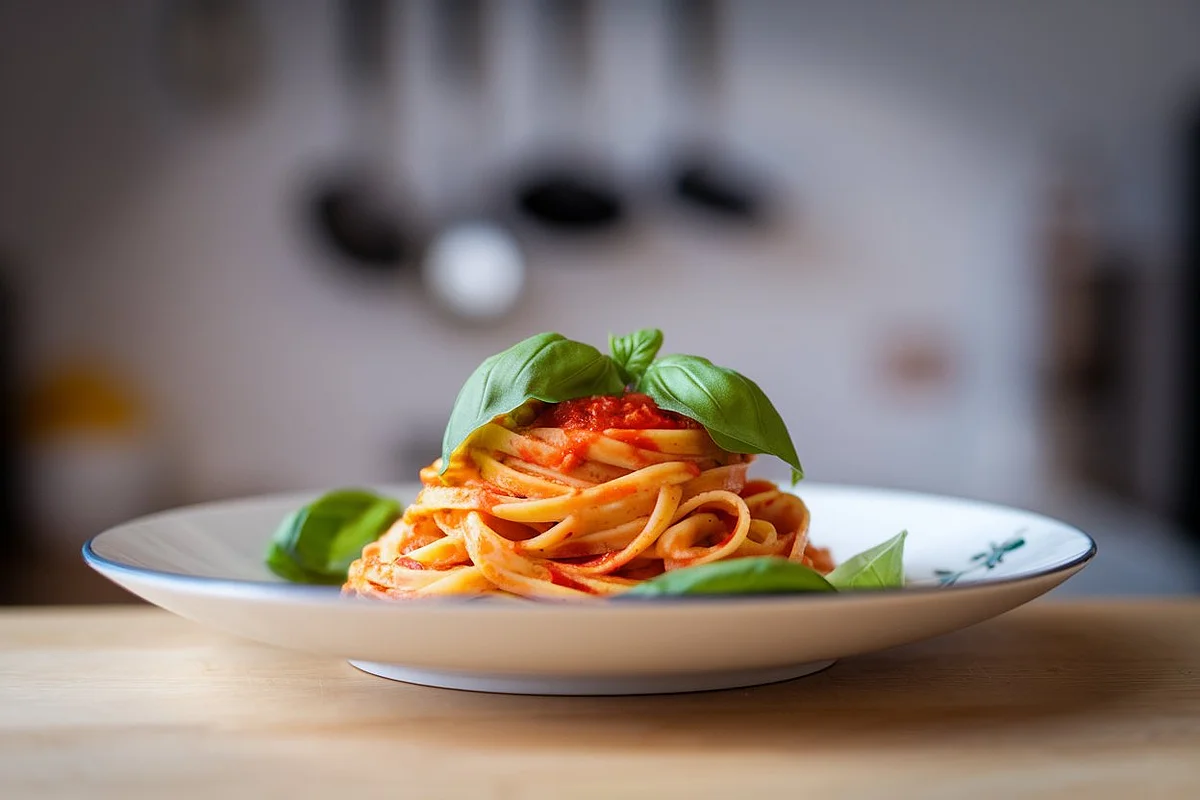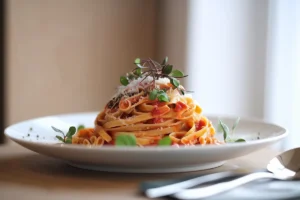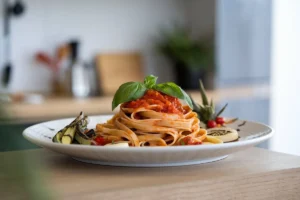Pasta is a beloved staple in many households around the world. Whether you’re making a simple spaghetti with marinara or a luxurious fettuccine alfredo, achieving the perfect texture is essential. The secret to great pasta dishes often lies in knowing how to boil pasta al dente. In this guide, we’ll dive deep into what al dente means, how to boil pasta al dente perfectly, and common mistakes to avoid.
Cooking pasta al dente enhances its texture and prevents it from becoming too soft and mushy. It’s especially important when you’re pairing pasta with rich sauces that cling to the pasta and maintain their structure. So, let’s explore the science and method behind this essential cooking technique and learn how to boil pasta al dente like a pro.
What Does Al Dente Mean?
The term al dente comes from Italian, meaning “to the tooth.” This refers to the ideal texture of cooked pasta: firm, but not hard, and with a slight resistance when bitten into. Learning how to boil pasta al dente ensures your pasta maintains its shape and doesn’t dissolve into a soft, mushy mess when mixed with sauces.
Unlike fully cooked pasta, which can become soggy or clump together, al dente pasta absorbs sauces perfectly. For example, when cooking spaghetti al dente, the noodles remain firm enough to complement robust sauces like bolognese or carbonara, without becoming limp.
To truly understand why al dente is crucial, let’s look into the science behind cooking pasta and mastering how to boil pasta al dente. When pasta is added to boiling water, the heat causes the starches to gelatinize, meaning they absorb water and expand. Achieving al dente requires perfect timing, so the starches expand just enough to give the pasta that slight resistance without overcooking.
The Science Behind Cooking Al Dente Pasta
Understanding the science behind cooking pasta can help you perfect the al dente technique. Pasta is made primarily from wheat flour and water. When exposed to boiling water, the starches in the flour begin to absorb water and swell. This process, known as gelatinization, causes the pasta to soften.
The key to learning how to boil pasta al dente lies in timing the cooking process so that the pasta retains some firmness while being fully cooked. As the starches absorb water, they create a firm structure that holds the pasta’s shape. If the pasta cooks too long, the starches break down further, leading to a softer, less appealing texture.
If you’re interested in mastering more pasta recipes, check out our detailed guide on pasta sauce pairings.
Choosing the Right Pasta for Al Dente Cooking
Not all pasta shapes are created equal, and different types require varying cooking times to achieve the perfect al dente texture. Learning how to boil pasta al dente means understanding that thin pastas like spaghetti, linguine, and angel hair require shorter cooking times, typically around 7-9 minutes. Meanwhile, thicker pastas like penne, rigatoni, and fettuccine may take between 10-12 minutes to cook al dente.
Here’s a guide to approximate al dente cooking times:
- Spaghetti: 7-9 minutes
- Penne: 10-12 minutes
- Rigatoni: 12 minutes
- Fusilli: 11 minutes
- Fettuccine: 9-11 minutes
- Linguine: 7-9 minutes
If you’re cooking gluten-free pasta, the process might differ slightly. Gluten-free pasta is typically made from rice flour, corn flour, or other alternative grains that lack gluten’s elasticity, so it can cook faster than traditional wheat pasta. The texture of gluten-free pasta can also be more delicate, which is why timing is critical to achieve an al dente bite. For more tips on this, check out this guide on how to boil pasta al dente with gluten-free options.
For additional insights, read our guide on different types of pasta.
Step-by-Step Guide to Boiling Pasta Al Dente
Now that you understand the basics, let’s dive into the step-by-step process of mastering how to boil pasta al dente.
- Prepare a Large Pot of Water
Fill a large pot with water. The general rule is to use 4 liters of water for every pound (450 grams) of pasta. This ensures that the pasta has plenty of room to move around and cook evenly. - Salt the Water
Once the water is boiling, add salt. Use approximately 1 tablespoon of salt per 4 liters of water. Salt enhances the flavor of the pasta and helps the noodles absorb flavor while they cook. - Bring Water to a Rapid Boil
Before adding the pasta, make sure the water is at a full, rolling boil. Adding pasta to cold or lukewarm water will result in uneven cooking. - Add the Pasta
Once the water is boiling, add the pasta. Stir immediately to prevent the pasta from sticking together. Continue stirring every few minutes during the cooking process to ensure even cooking. - Monitor the Cooking Time
Check the pasta package for recommended cooking times, but start checking for al dente about 2 minutes before the time listed on the package. Taste the pasta to see if it has the right texture. It should be firm to the bite, but not hard. - Drain the Pasta
Once the pasta reaches the desired al dente texture, drain it immediately. For most dishes, there’s no need to rinse the pasta, as you want the starchy surface to help sauces cling to it. However, if you’re making a pasta salad or need to halt the cooking process quickly, you can rinse the pasta with cold water. - Serve or Toss with Sauce
After draining, toss the pasta with your sauce or dish immediately. The pasta will continue to cook slightly from residual heat, so don’t leave it sitting in the colander for too long.
Common Mistakes to Avoid When Cooking Pasta Al Dente
Cooking pasta is simple, but there are a few common mistakes that can easily ruin the texture and flavor. Here are some errors to avoid:
- Not using enough water: If there isn’t enough water in the pot, the pasta will stick together and cook unevenly. Always use plenty of water.
- Adding pasta to cold water: Pasta should always be added to boiling water to ensure even cooking.
- Overcooking the pasta: Once pasta is overcooked, it becomes mushy and loses its al dente texture. Always start testing the pasta for doneness a few minutes before the recommended cooking time.
- Adding oil to the water: Some people add oil to prevent pasta from sticking, but this can make the pasta slippery and prevent sauces from adhering properly.
- Not stirring enough: Stirring is essential during the first few minutes of cooking to prevent the pasta from clumping together.
For more tips on cooking and avoiding common kitchen mistakes, check out our kitchen hacks.
Advanced Tips for Cooking Al Dente Pasta
Here are some advanced tips to help you master the al dente technique every time:
- Use a timer, but don’t rely solely on it. The best way to tell if your pasta is al dente is to taste it. A timer can help, but your taste buds are the ultimate judge.
- Save some pasta water: The starchy water can be used to adjust the consistency of your sauce. Just before draining the pasta, scoop out a cup of pasta water and set it aside. It can be added to sauces to help them cling better to the pasta.
- Cook pasta just before serving: Pasta should be served immediately after it’s cooked. If you cook it too early, it can continue cooking in its residual heat and become mushy.
- Consider your sauce: Thicker sauces, like alfredo or bolognese, require sturdier pasta shapes like penne or rigatoni. For lighter sauces, like aglio e olio (olive oil and garlic), thinner pastas like spaghetti or linguine work best.
Frequently Asked Questions (FAQs)
Q1: Why is it important to cook pasta al dente?
A: Cooking pasta al dente ensures that it retains its structure and texture. It also makes the pasta easier to digest and prevents it from becoming overly soft when mixed with sauces.
Q2: Can you achieve al dente texture with any type of pasta?
A: Yes, you can achieve al dente with most pasta types, but the cooking time varies depending on the thickness and shape of the pasta.
Q3: Should I rinse the pasta after cooking?
A: In most cases, no. Rinsing pasta removes the starches that help sauces cling to the noodles. The only exception is if you’re making a cold pasta dish or need to stop the cooking process quickly.
Q4: Can I still achieve al dente if I accidentally overcook the pasta?
A: Unfortunately, once pasta is overcooked, it’s difficult to return to al dente. However, you can salvage it by tossing it in a hot saucepan with sauce for a minute or two.
Q5: Should I add oil to the pasta water to prevent sticking?
A: No. Adding oil will prevent the sauce from adhering to the pasta. Instead, stir the pasta frequently during cooking.
Q6: How do I prevent my pasta from becoming too sticky?
A: Use a large pot with plenty of water, and stir the pasta immediately after adding it to the water. Stir occasionally throughout the cooking process.
Conclusion
Cooking pasta al dente is a fundamental skill that can elevate your pasta dishes. By following the steps outlined in this guide, you’ll be able to achieve the perfect texture every time. Remember to salt your water, taste test your pasta, and avoid overcooking. With a little practice, you’ll master the al dente technique, ensuring your pasta dishes are always delicious and satisfying.
For more delicious recipes, browse our pasta section and Italian cooking tips to enhance your culinary skills.
By adhering to these tips and best practices, your pasta will turn out perfectly every time, whether you’re making a simple bowl of spaghetti aglio e olio or a rich fettuccine alfredo. Practice makes perfect when it comes to al dente, so don’t be afraid to experiment with different pasta types and sauces.



